

Call it the mysterious island or “the island with the heads,” or “the island with a peculiar name”, the truth is that this Island, not easily accessible by humans, has been shrouded in mystery for ages. But not anymore. A bunch of archeologists came close to finding what could be the true history and origin of Easter Island. Buried deep beneath the ground they found things which are mind-boggling.
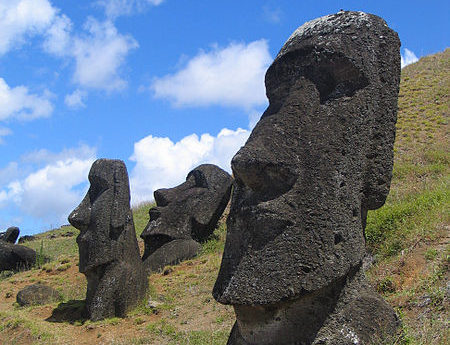 Since ages, these ancient stone heads, known to us as Moai have confounded people. For a long time now, archeologists have been trying to find the origins of these constructions and understand why the construction halted. It's one of those historical mysteries which is yet to be solved. What makes the history of Moai more interesting is the location of the island they are on.
Since ages, these ancient stone heads, known to us as Moai have confounded people. For a long time now, archeologists have been trying to find the origins of these constructions and understand why the construction halted. It's one of those historical mysteries which is yet to be solved. What makes the history of Moai more interesting is the location of the island they are on.
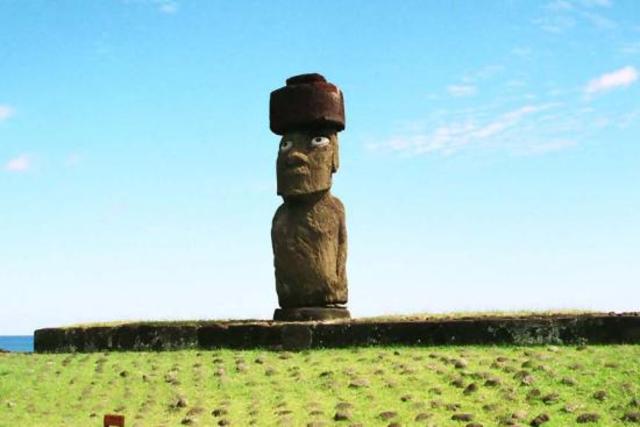
Recently, archeologists made a bizarre and groundbreaking discovery on the Easter Islands where all these Moai statues are. The discovery involved the height of the statues' heads. Paro, the tallest Moai is 10m (33ft) tall and weighs 82 tonnes!
It is believed that the Moai has been on the Chilean Polynesian island since 1250 C.E.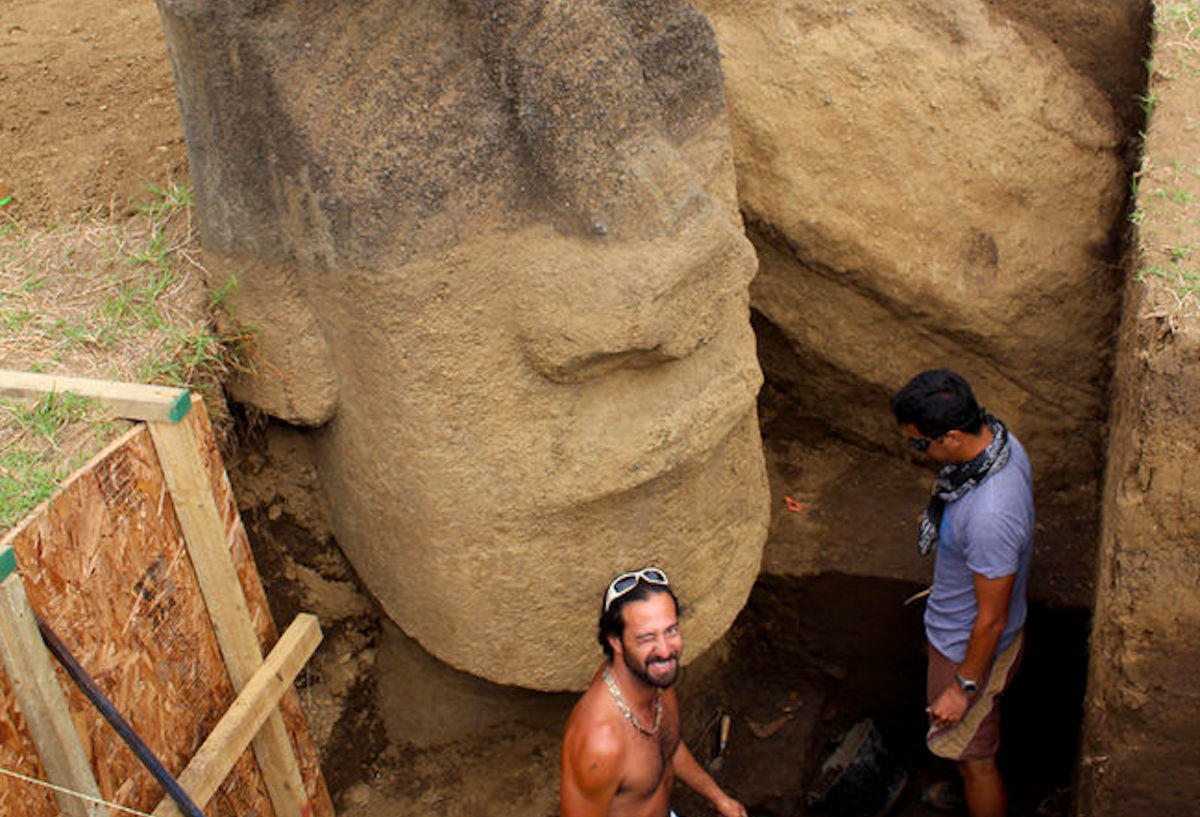
A team of archeologists, part of Easter Island Statue Project decided to excavate a large number of Rapa Nui’s statues. The excavation project did not go in vain as the archeologists made some breathtaking discoveries about the history of these structures and how they might have come into existence. In the excavated structures was found a sort of a red pigment and the speculations are that it was this pigment that was used to paint the Moai.
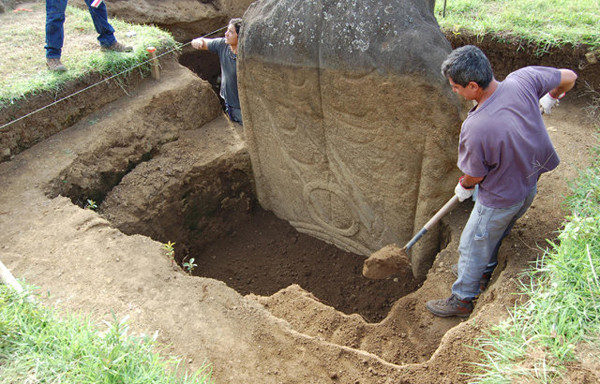 Some discoveries that the EISP made are mind-boggling. There was an intriguing relic found under one of the statues. Under the statue was a stone on which was a carving in the shape of a crescent. It is believed that it is a symbol of a canoe or vaka (a boat). The statue with which this stone was found has petroglyphs (a prehistoric carving on a stone) written on it. Van Tilburg (the person leading the project) and his team believed that these petroglyphs hinted to the history of the statues.
Some discoveries that the EISP made are mind-boggling. There was an intriguing relic found under one of the statues. Under the statue was a stone on which was a carving in the shape of a crescent. It is believed that it is a symbol of a canoe or vaka (a boat). The statue with which this stone was found has petroglyphs (a prehistoric carving on a stone) written on it. Van Tilburg (the person leading the project) and his team believed that these petroglyphs hinted to the history of the statues.
 Exactly how the Moai were moved across the Easter Island has been ages long mystery. There have been numerous theories about the same. A simple one of them is that the statues could not have been moved without human labor and required minimum the help of ropes among other things. Another simplistic theory is that logs were used to roll the Moai to the desired location. If these theories were to be thought of practically then each structure would have required a labor of 50-100 people to move.
Exactly how the Moai were moved across the Easter Island has been ages long mystery. There have been numerous theories about the same. A simple one of them is that the statues could not have been moved without human labor and required minimum the help of ropes among other things. Another simplistic theory is that logs were used to roll the Moai to the desired location. If these theories were to be thought of practically then each structure would have required a labor of 50-100 people to move.
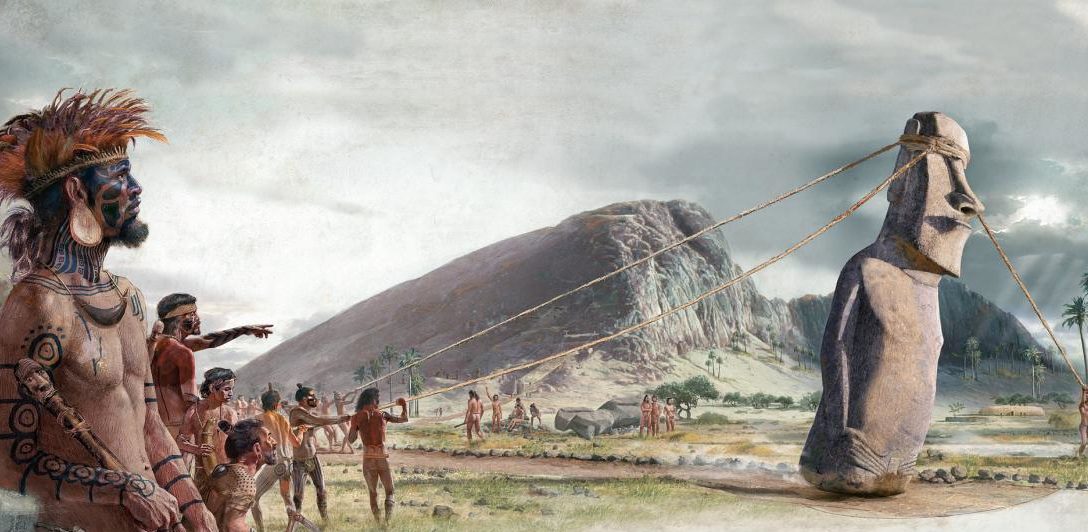 To test the validity of these theories a Czech engineer Pavel Pavel and a Norwegian adventurer Thor Heyerdahl collaborated and constructed a Moai from scratch. They tied one rope around its head and another around the base and then with the help of 16 other people they tried to cautiously move the statue. In the process, they found out that no matter how conscious they were, they were causing the statue some damage. So the exercise came to an end for the day. In order to not damage the statue, they had to move it 330 ft per day.
To test the validity of these theories a Czech engineer Pavel Pavel and a Norwegian adventurer Thor Heyerdahl collaborated and constructed a Moai from scratch. They tied one rope around its head and another around the base and then with the help of 16 other people they tried to cautiously move the statue. In the process, they found out that no matter how conscious they were, they were causing the statue some damage. So the exercise came to an end for the day. In order to not damage the statue, they had to move it 330 ft per day.
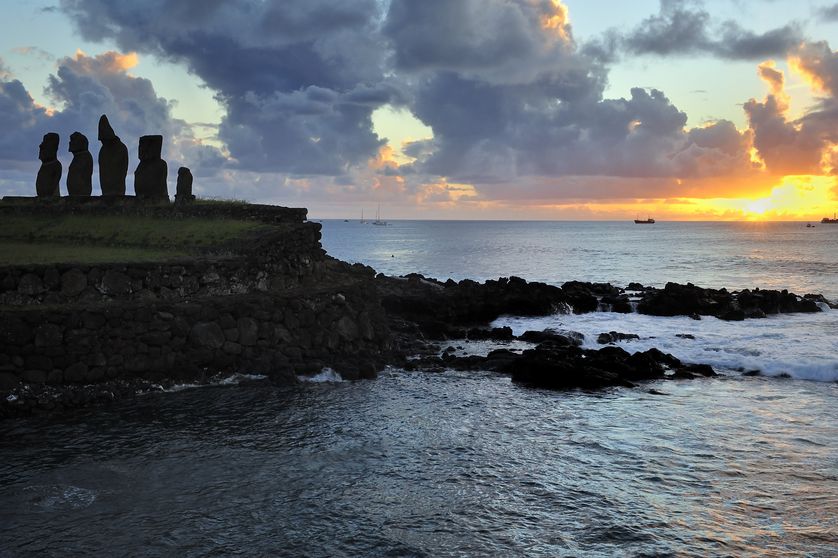 All the Moai on the Easter Island face inwards, towards the island and not the ocean. Why is that? The myth goes that the people of the Easter island believed that they were the only people in the entire world. So if there were going to be any bad people they would be coming FROM the island and not the sea. Hence the Moai face inwards, in order to protect the community.
All the Moai on the Easter Island face inwards, towards the island and not the ocean. Why is that? The myth goes that the people of the Easter island believed that they were the only people in the entire world. So if there were going to be any bad people they would be coming FROM the island and not the sea. Hence the Moai face inwards, in order to protect the community.
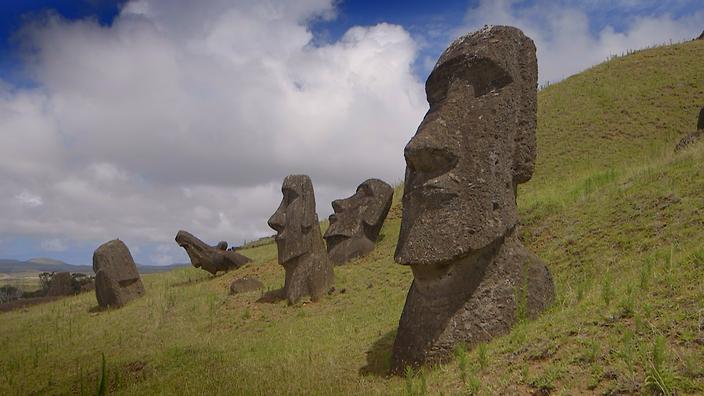 One of the superstitions that the Islanders believe in is that there is a reason why Moai have fallen and they should not be put back up. But the other side of the island seemed to speak another story. It is said that the Japanese donated a lot of money to rebuild a platform so that the Moai could be upright, so stories vary.
One of the superstitions that the Islanders believe in is that there is a reason why Moai have fallen and they should not be put back up. But the other side of the island seemed to speak another story. It is said that the Japanese donated a lot of money to rebuild a platform so that the Moai could be upright, so stories vary.
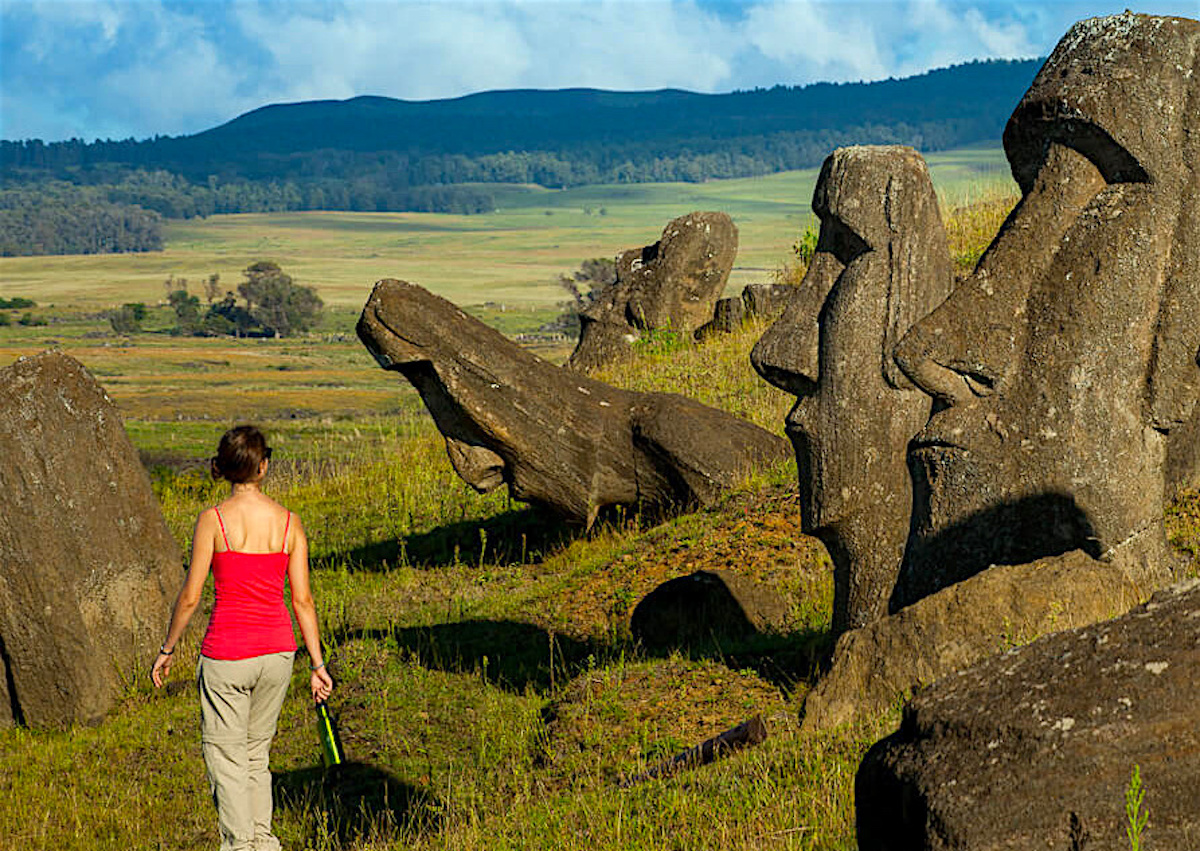 Many statues on the Eastern island are damaged or torn down. One of the most accepted reasons for this is that, sometime in the 18th century, a riot broke out where the residents rebelled against their leaders. The tensions between the community led to battles and the Moai were the unintended casualties. Most of these statues lay partially destructed on the ground but since then have been erected again.
Many statues on the Eastern island are damaged or torn down. One of the most accepted reasons for this is that, sometime in the 18th century, a riot broke out where the residents rebelled against their leaders. The tensions between the community led to battles and the Moai were the unintended casualties. Most of these statues lay partially destructed on the ground but since then have been erected again.
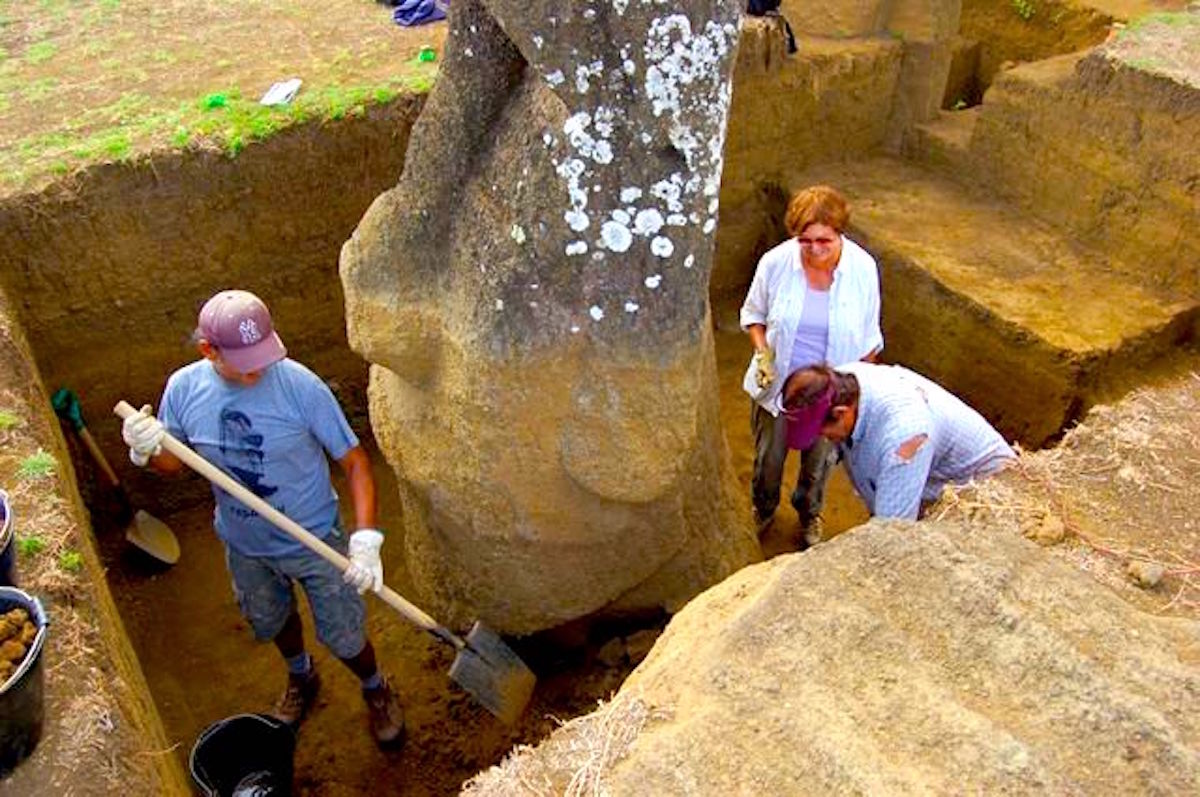
One theory which might sound unbelievable is that the Moai were created and placed on the Easter island by aliens. This insane sounding idea was put forth in the book- Chariots of the Gods?: Unsolved Mysteries of the Past by Erich von Daniken. Not only the Moai, von Daniken thinks that even the Pyramids in Egypt are works by the extraterrestrial.
The argument to this is- the stone used to build the Moai were from the island itself. Thor Heyerdahl claims that there were roads in Rapa Nui which were used for transport. These roads were discovered after the Moai toppled over them were removed. Katherine Routledge, a British archeologist, on the other hand, believes that the purpose of these roads was ritualistic. It is not a completely invalid theory as the roads lead to the now extinct Rano Rarulp volcano which in all probability was the center of worship of the community.
Thor Heyerdahl claims that there were roads in Rapa Nui which were used for transport. These roads were discovered after the Moai toppled over them were removed. Katherine Routledge, a British archeologist, on the other hand, believes that the purpose of these roads was ritualistic. It is not a completely invalid theory as the roads lead to the now extinct Rano Rarulp volcano which in all probability was the center of worship of the community.
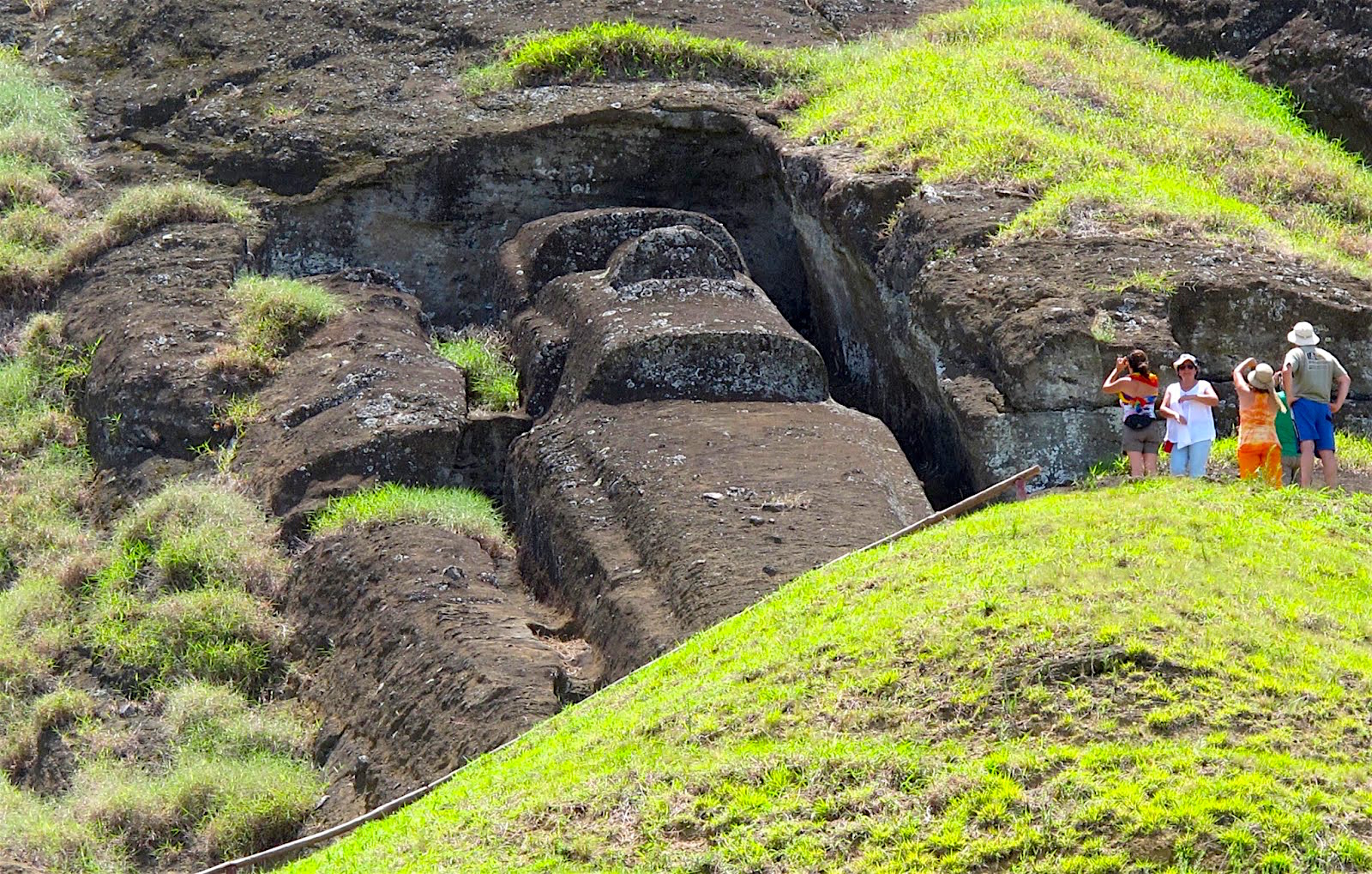 The Island is full of mysteries. There is confusion surrounding the writing system used on the Island too. One archeologist believes that the calligraphy on the structures and other places could be about 10, 000 years older than previously ventured. That would mean that even the Island is also older than dated.
The Island is full of mysteries. There is confusion surrounding the writing system used on the Island too. One archeologist believes that the calligraphy on the structures and other places could be about 10, 000 years older than previously ventured. That would mean that even the Island is also older than dated.
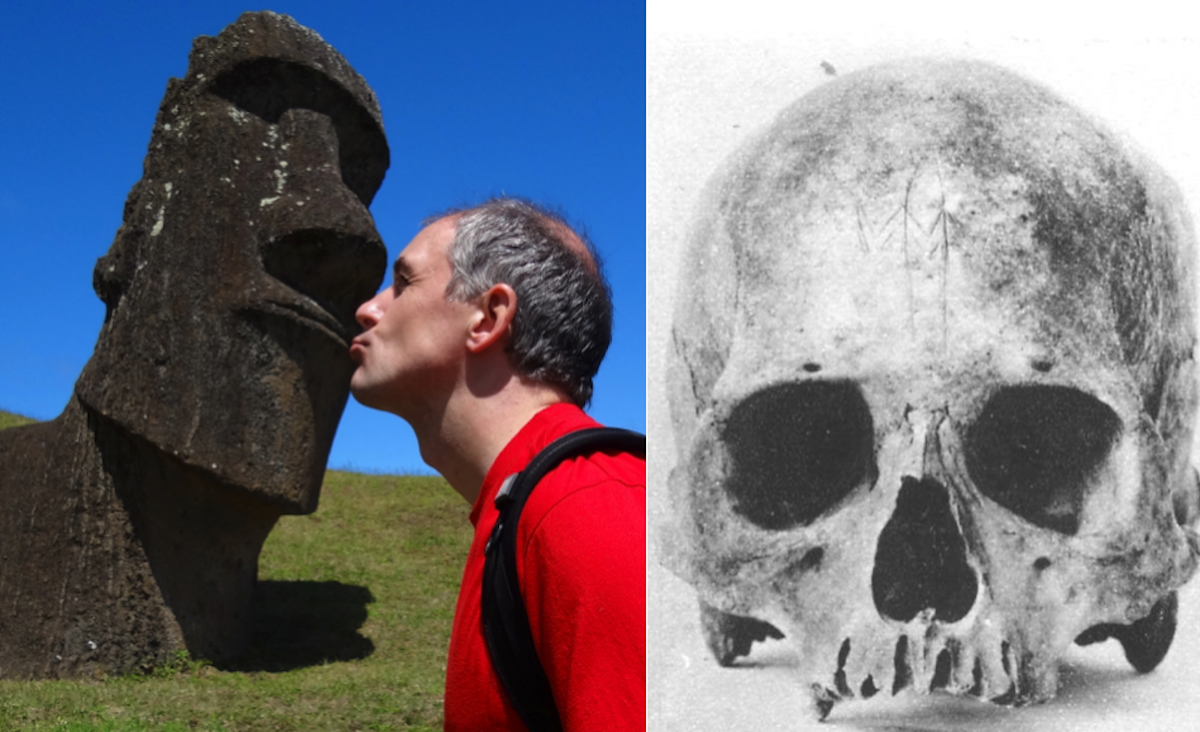 The finds on Easter Island only got more interesting over the ages. The skulls of the people who lived there were discovered and they revealed some intriguing things. The people on the island seemed to have had longer and narrower faces than an average human being, they had long ears too.
The finds on Easter Island only got more interesting over the ages. The skulls of the people who lived there were discovered and they revealed some intriguing things. The people on the island seemed to have had longer and narrower faces than an average human being, they had long ears too.
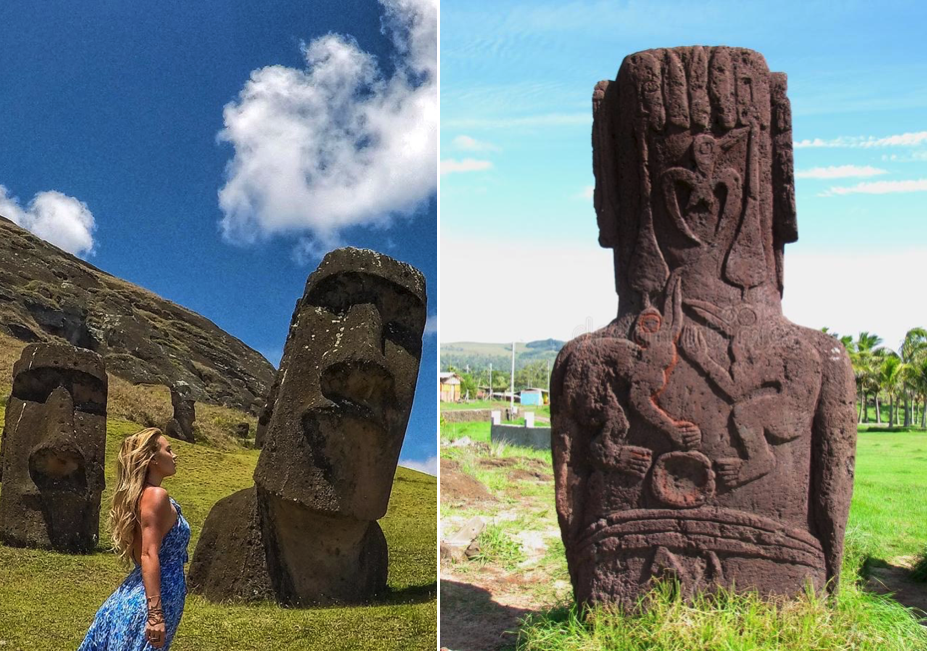 These illustrations seen in the picture were captured in the “Cannibal Cave,” and display what is popularly known as the "Birdman" or Tangata Manu. This was apparently the winner of an annual competition held on the island. What was the competition for? Residents competed for one another to swim to another island and collect the first egg of the season. The first one to return was the winner, Birdman, and he became the leader of the community for the next year.
These illustrations seen in the picture were captured in the “Cannibal Cave,” and display what is popularly known as the "Birdman" or Tangata Manu. This was apparently the winner of an annual competition held on the island. What was the competition for? Residents competed for one another to swim to another island and collect the first egg of the season. The first one to return was the winner, Birdman, and he became the leader of the community for the next year.
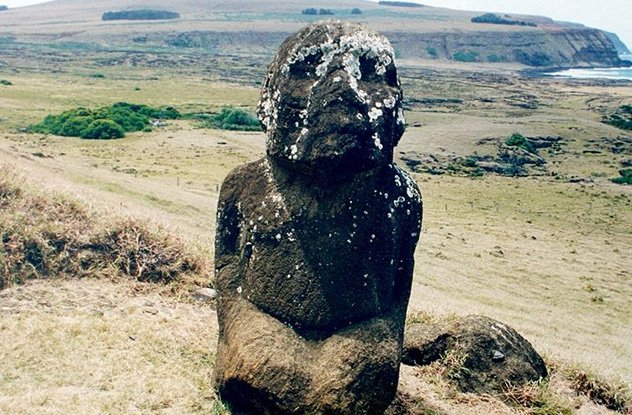 Tukuturi easily is the most unique statue on Easter Island. It is believed to be the physical manifestation of an old singer. The figure is in the kneeling position and sports a beard. It is way smaller as compared to other Moai statues. It is made of a different material too. Red Puna Pua stone had been used to build this statue.
Tukuturi easily is the most unique statue on Easter Island. It is believed to be the physical manifestation of an old singer. The figure is in the kneeling position and sports a beard. It is way smaller as compared to other Moai statues. It is made of a different material too. Red Puna Pua stone had been used to build this statue.
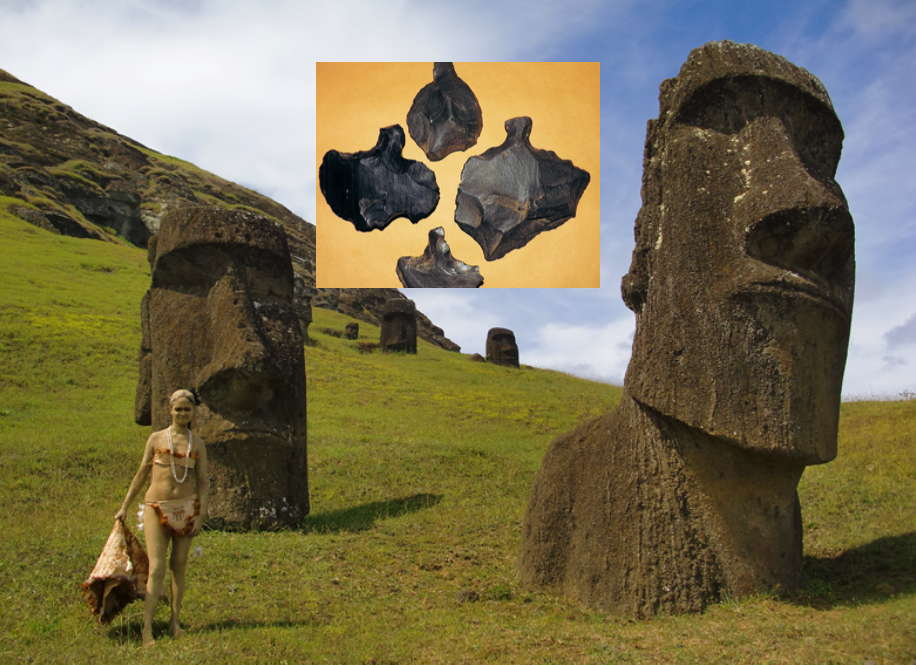 Tools that the people of Rapa Nui used were called Mata. These tools were made out of the volcanic glass and carved in different shapes and sizes. As expected, most of these tools were sharp as they were used to cut fiber, wood or used as weapons. These tools are one of the most basic and popular features found in the Rapa Nui exhibitions and museums around the globe.
Tools that the people of Rapa Nui used were called Mata. These tools were made out of the volcanic glass and carved in different shapes and sizes. As expected, most of these tools were sharp as they were used to cut fiber, wood or used as weapons. These tools are one of the most basic and popular features found in the Rapa Nui exhibitions and museums around the globe.
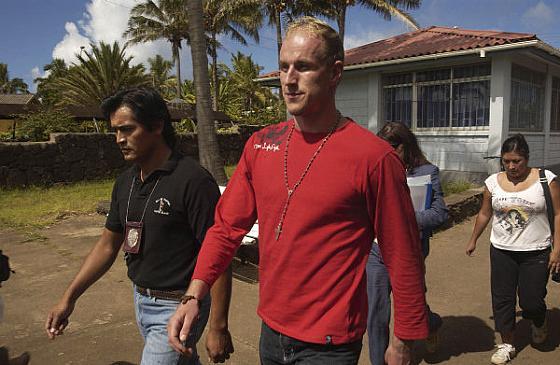 Not everyone is as respectful of the historical artifacts as the archeologists. A Finnish tourist somehow managed to cut off an ear of one of the Moai and ran away. Someone on the island saw this man, Marko Kulju and immediately reported him to the police. Kulju was consequently arrested and fined with $17,000 USD. The man could have been charged with 7 years in prison too. Post this incident the security at the national park was made stricter.
Not everyone is as respectful of the historical artifacts as the archeologists. A Finnish tourist somehow managed to cut off an ear of one of the Moai and ran away. Someone on the island saw this man, Marko Kulju and immediately reported him to the police. Kulju was consequently arrested and fined with $17,000 USD. The man could have been charged with 7 years in prison too. Post this incident the security at the national park was made stricter.
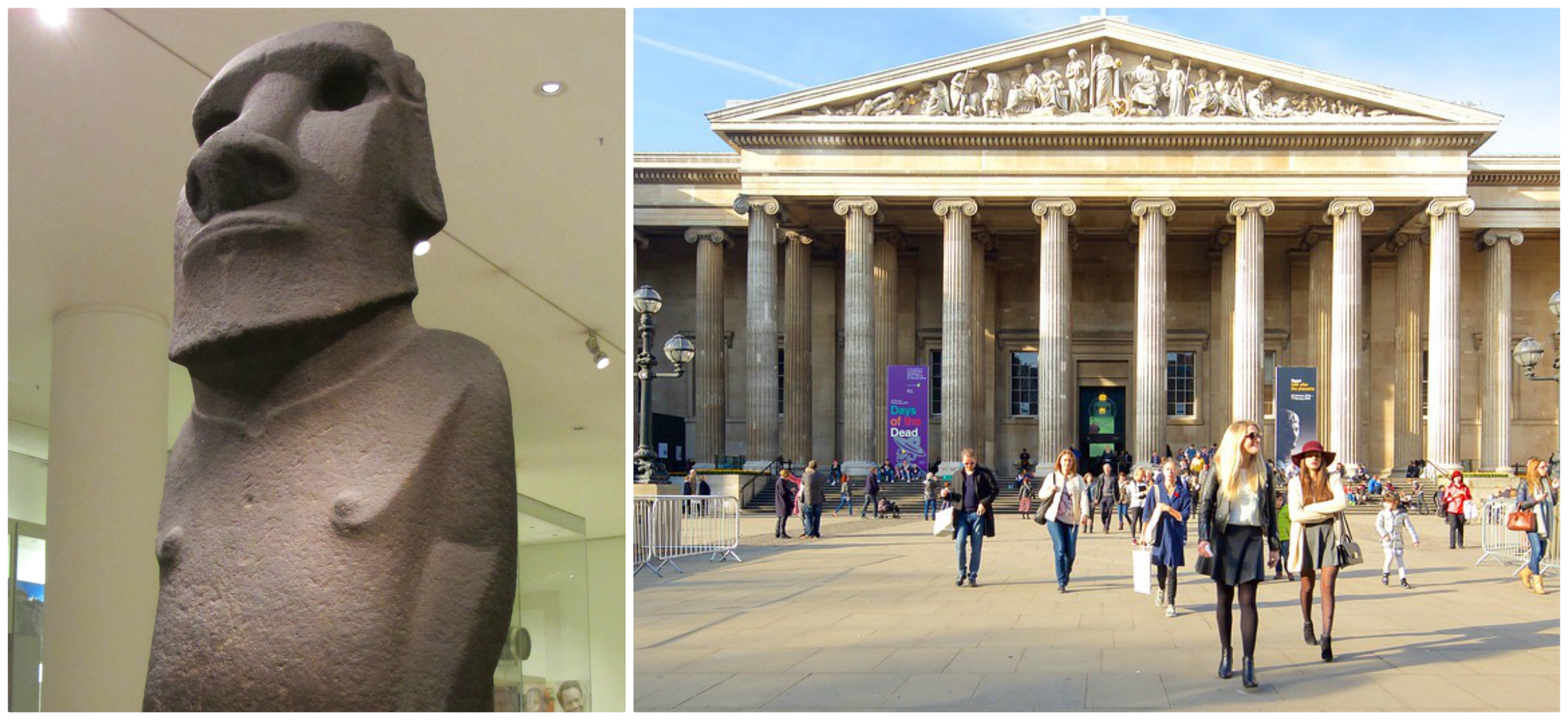 Hoa Hakananai’a considered a masterpiece is, not even on the island anymore. It was 1868 when a British crew on the ship HMS Topaze took the statue with them from the Easter Island. After much ado, in 1969, the statue reached England and has been on display at the London’s British Museum ever since. It is smaller than average Moai yet regarded as a masterpiece.
Hoa Hakananai’a considered a masterpiece is, not even on the island anymore. It was 1868 when a British crew on the ship HMS Topaze took the statue with them from the Easter Island. After much ado, in 1969, the statue reached England and has been on display at the London’s British Museum ever since. It is smaller than average Moai yet regarded as a masterpiece.
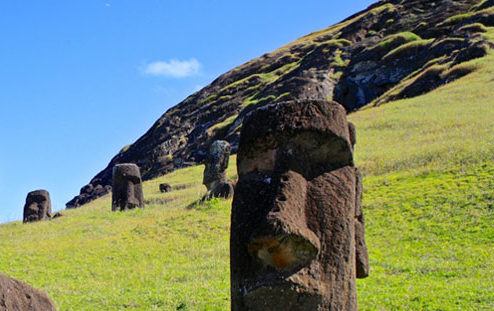 Another strange theory about the Moai's existence was given by Dr. Anneliese Pontius who is a psychiatry professor at Harvard Medical School. He theorized that the islanders created the Moai to be able to cure leprosy. This is what he thought that islanders believed- when they saw the deformities of the face, hands, and arms the felt the need to create perfect specimens which would somehow undo the suffering caused by leprosy.
Another strange theory about the Moai's existence was given by Dr. Anneliese Pontius who is a psychiatry professor at Harvard Medical School. He theorized that the islanders created the Moai to be able to cure leprosy. This is what he thought that islanders believed- when they saw the deformities of the face, hands, and arms the felt the need to create perfect specimens which would somehow undo the suffering caused by leprosy.
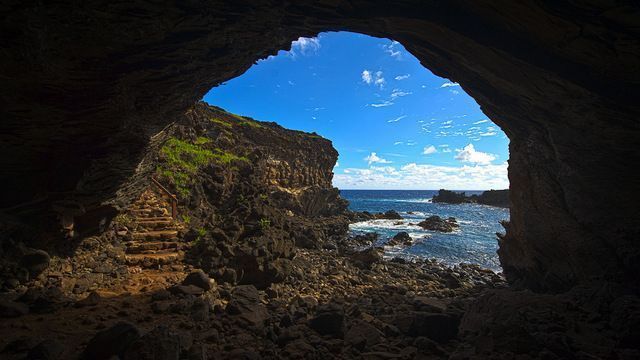 Not only is the past of Easter Island rich in historical significance but it's contemporary society too has some tales to tell as it has seen some speedy changes. One tour guide said that his 87-year-old great-grandmother spent her entire childhood growing in a cave. When the islanders witnessed a plane flying over their island, most of them were quite baffled.
Not only is the past of Easter Island rich in historical significance but it's contemporary society too has some tales to tell as it has seen some speedy changes. One tour guide said that his 87-year-old great-grandmother spent her entire childhood growing in a cave. When the islanders witnessed a plane flying over their island, most of them were quite baffled.
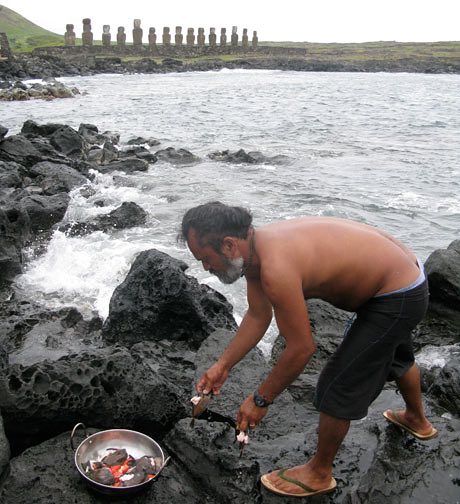 People on the island have made a life for themselves mostly by becoming tour guides there. This man named Moi works with a company named Ancestral Tours. He gives the tourist the live experience of watching how the people of Rapa Nui live their daily lives. He gives them a water tour and in the night, cooks the local dishes for them by the sea where the Moai face the island.
People on the island have made a life for themselves mostly by becoming tour guides there. This man named Moi works with a company named Ancestral Tours. He gives the tourist the live experience of watching how the people of Rapa Nui live their daily lives. He gives them a water tour and in the night, cooks the local dishes for them by the sea where the Moai face the island.
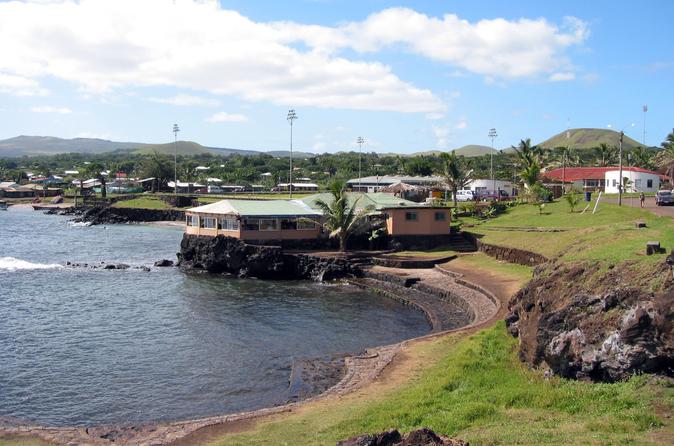 A lot of people currently residing in the Easter Island are not from there originally. Almost all population is in Hanga Roa, the capital which, if we are frank is not the most exciting Rapa Nui location. The town has just one bank and a few businesses; basic infrastructure. The place, however, has adequate places for the tourists to stay at.
A lot of people currently residing in the Easter Island are not from there originally. Almost all population is in Hanga Roa, the capital which, if we are frank is not the most exciting Rapa Nui location. The town has just one bank and a few businesses; basic infrastructure. The place, however, has adequate places for the tourists to stay at.
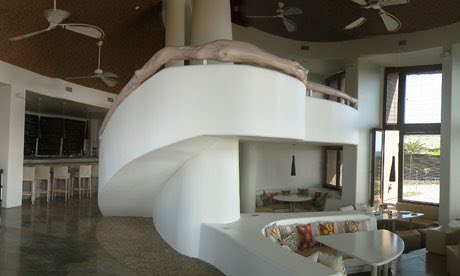 The place, because of its rich culture and history, thrives on tourism. And one of the attractive places there is the Hangaroa Eco Village and Spa. It is the first big hotel in the capital having 75 rooms and the theme of the rooms is how the Rapa Nui people actually live, thus giving the tourists an exotic feel. Solar panels and wind turbines produce the required electricity. The attractive hotel also has magnificent clay baths and furniture made of the volcanic rock.
The place, because of its rich culture and history, thrives on tourism. And one of the attractive places there is the Hangaroa Eco Village and Spa. It is the first big hotel in the capital having 75 rooms and the theme of the rooms is how the Rapa Nui people actually live, thus giving the tourists an exotic feel. Solar panels and wind turbines produce the required electricity. The attractive hotel also has magnificent clay baths and furniture made of the volcanic rock.
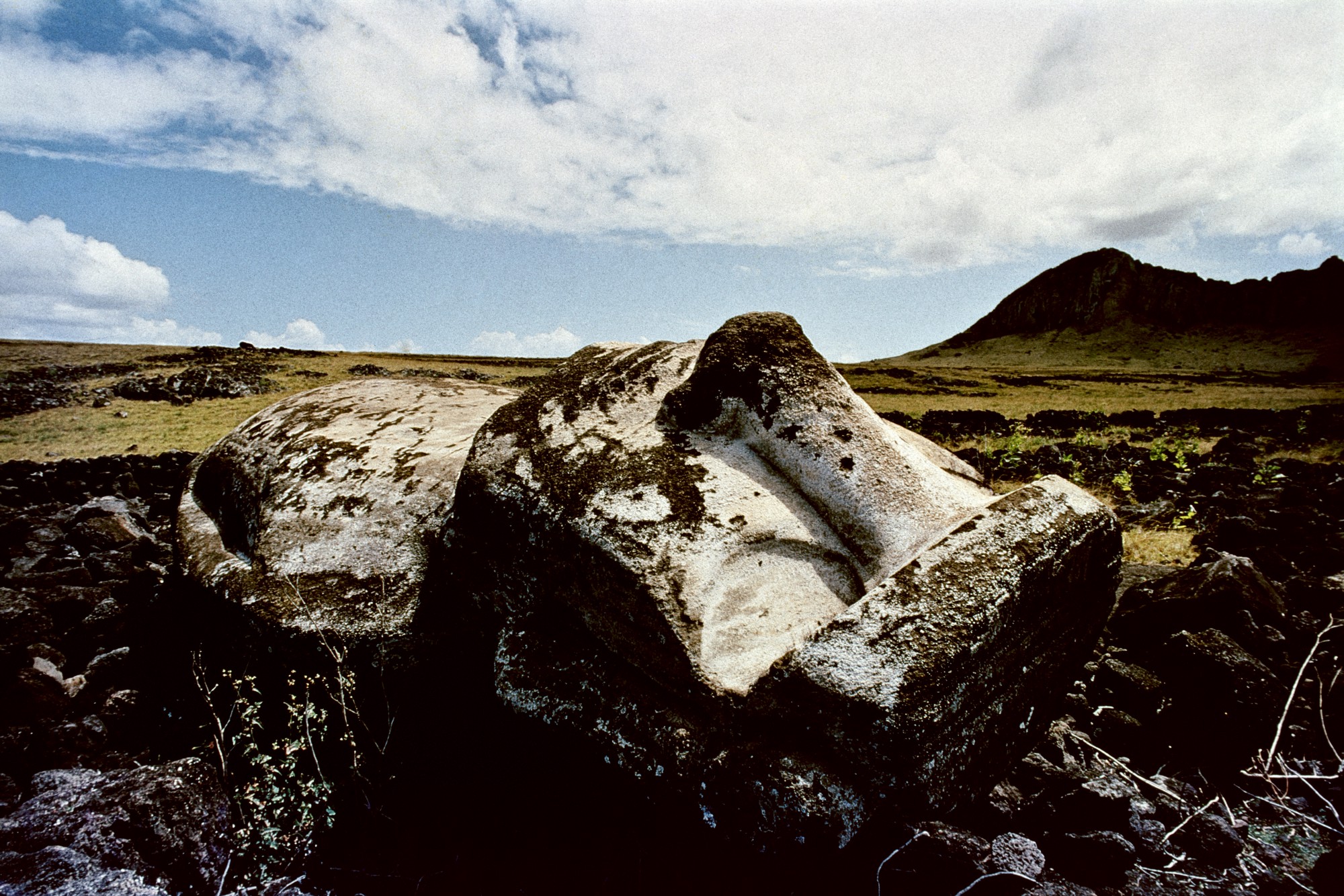 Historians without a debate agree on one theory that at someone, Easter Island was deforested. It is believed, not proved that the residents burned the trees, plants, and bushes to clear the land and use the wood to make canoes. The landscape of the place has changed than what it used to be.
Historians without a debate agree on one theory that at someone, Easter Island was deforested. It is believed, not proved that the residents burned the trees, plants, and bushes to clear the land and use the wood to make canoes. The landscape of the place has changed than what it used to be.
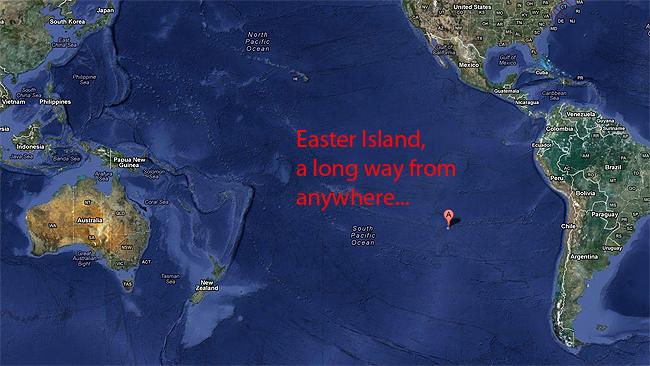 It should not come as a surprise to you that Easter Island is one of the most secluded places on earth. The nearest place to the island is Pitcairn, 1,200 miles away. Chile is the closest mainland and is 2,300 miles away. So the question is: is it worth the effort to travel all the way to Easter Island? Well, if you are a history fanatic then it is definitely worth it.
It should not come as a surprise to you that Easter Island is one of the most secluded places on earth. The nearest place to the island is Pitcairn, 1,200 miles away. Chile is the closest mainland and is 2,300 miles away. So the question is: is it worth the effort to travel all the way to Easter Island? Well, if you are a history fanatic then it is definitely worth it.
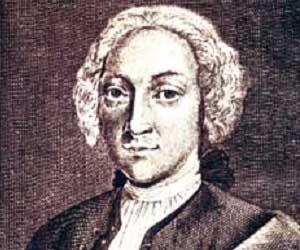 The Island is named after its discoverer and the time he discovered it. Jacob Roggeveen was the Dutch explorer who is believed to have found this location on April 5, 1722, which was the Easter Sunday. The Island is part of Chile and is officially called Isla de Pascua.
The Island is named after its discoverer and the time he discovered it. Jacob Roggeveen was the Dutch explorer who is believed to have found this location on April 5, 1722, which was the Easter Sunday. The Island is part of Chile and is officially called Isla de Pascua.
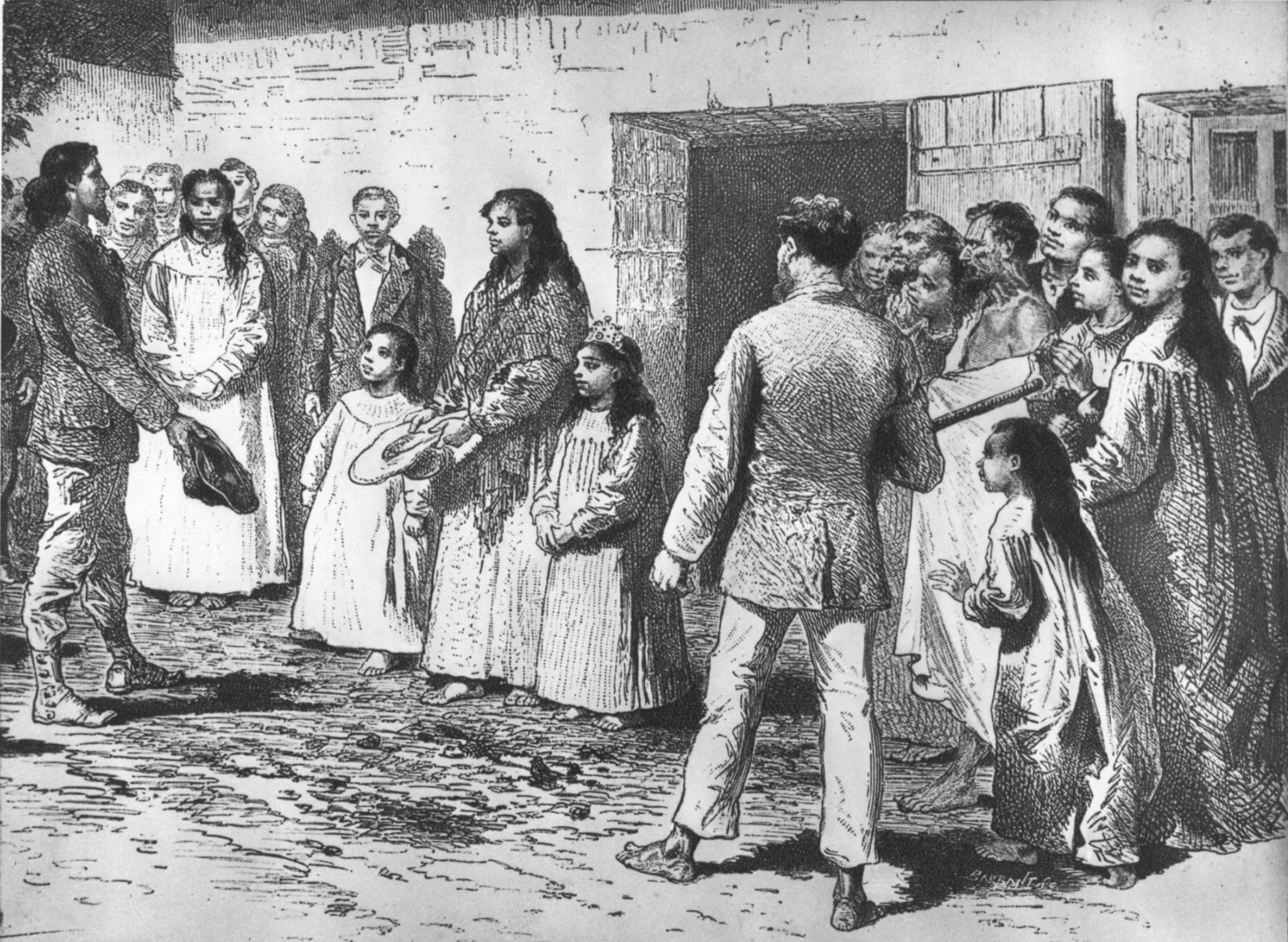 The popular theory in the 20th century was that the original settlers of the island were the Indians from the South American coast. After much deliberation and research historians debunked this theory. The theory agreed on these days is that the first discoverers of the land were of Polynesian descent who arrived here around 318 AD.
The popular theory in the 20th century was that the original settlers of the island were the Indians from the South American coast. After much deliberation and research historians debunked this theory. The theory agreed on these days is that the first discoverers of the land were of Polynesian descent who arrived here around 318 AD.
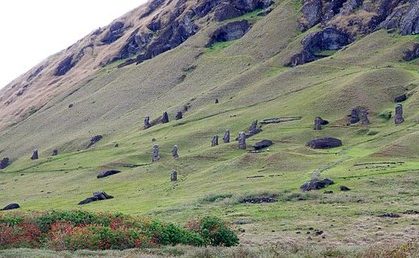 Before being known as how it is known today the place had a lot of names. The oldest name recorded is- Te Pito o Te Henua which translates to “The Center of the World.” Mata-Ki-Te-Rani is another name islanders gave this place which in English translates to “Eyes Looking at Heaven.” Tahitian sailors named it Rapa Nui in the 1860s and the history is well known from there.
Before being known as how it is known today the place had a lot of names. The oldest name recorded is- Te Pito o Te Henua which translates to “The Center of the World.” Mata-Ki-Te-Rani is another name islanders gave this place which in English translates to “Eyes Looking at Heaven.” Tahitian sailors named it Rapa Nui in the 1860s and the history is well known from there.
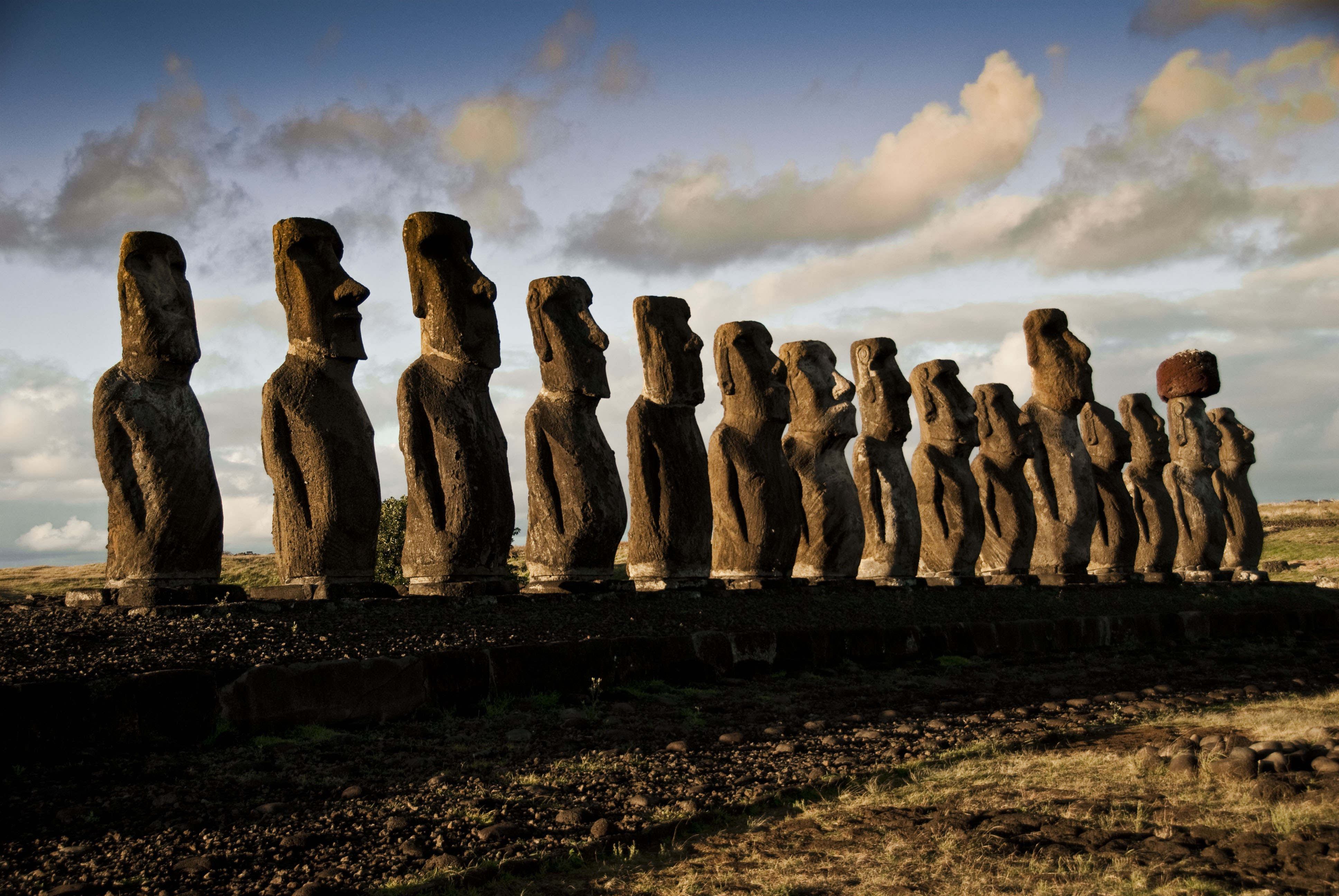
The Moai are not just "heads", they have whole bodies. These are not visible because they are buried in the ground. When these bodies were excavated by archeologists it was found that they were heavily tattooed. It was the discovery of these that bodies that led archeologists to believe that there is a lot more hidden on the island than what meets the eye.
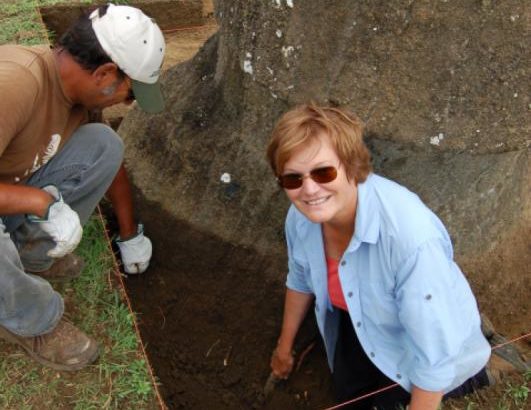
The director of the Easter Island Statue Project (EISP) is Jo Anne Van Tilburg. After the success of their recent excavation project, she released this statement online- “Our EISP excavations recently exposed the torsos of two 7m tall statues. Hundreds, perhaps thousands, of visitors to the island have been astonished to see that, indeed, Easter Island statues have bodies! More important, however, we discovered a great deal about the Rapa Nui techniques of ancient engineering.”
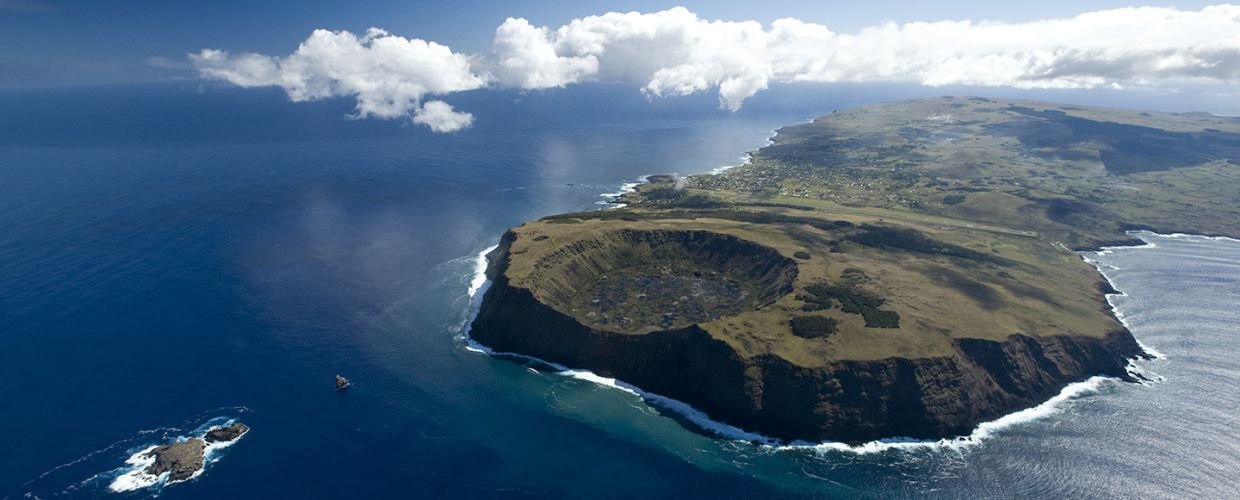
The Easter Island homes three volcanoes which are now extinct. The tallest of them stands at mighty 1674 feet. Factually, Easter Island is itself one large volcano. The volcano Ranu Kau is in the UNESCO World Heritage Site of Rapa Nui National Park.
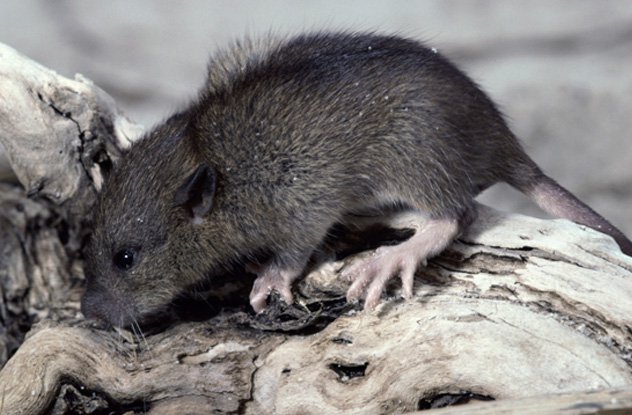
Apart from the theory that there were riots, another theory that tries to explain the disappearance of the Islanders in the 18th century is that the place was infested by rats. Some theorists believe that excess food attracted rodents which might have traveled to the island hidden in canoes

The rats probably ate all the healthy vegetation not only preventing growth but also infecting others. Though these rats were causing damage they ended up becoming the Islanders meal. This theory is backed up by the fact that archeologists found rat bones on the Island.
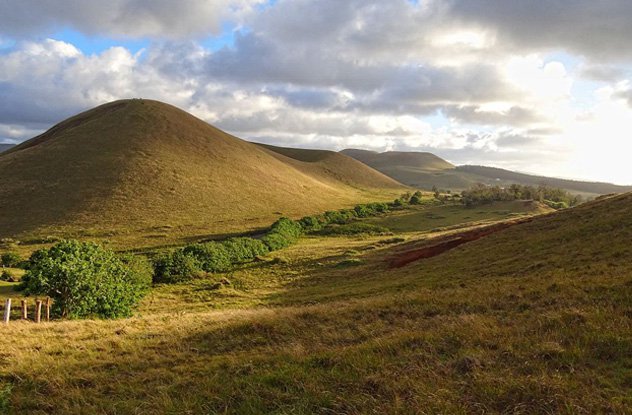
It is believed that the original inhabitants of the Easter Island were the cause of their own destruction. According to one theory, the residents cleared the forest area believing that it would grow back in no time. Then the increasing population created a problem as the place was not big enough to take care of a large population.
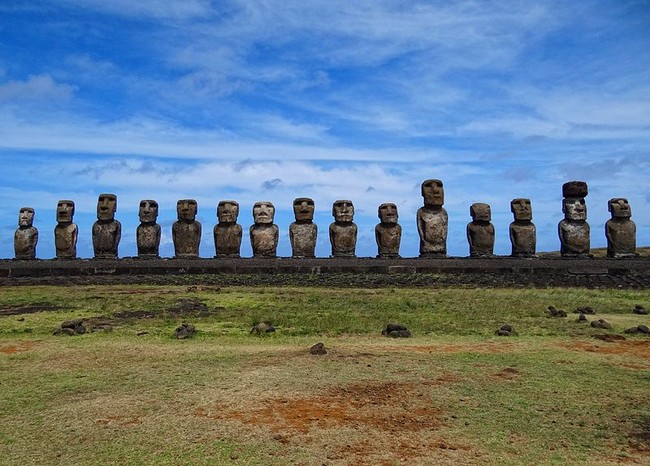
Though there have been speculations, there is still no certainty as to the identity of the architects of the Moai statues. There are a lot of theories just like about other things on the island but what the truth is, it still escapes the historians.
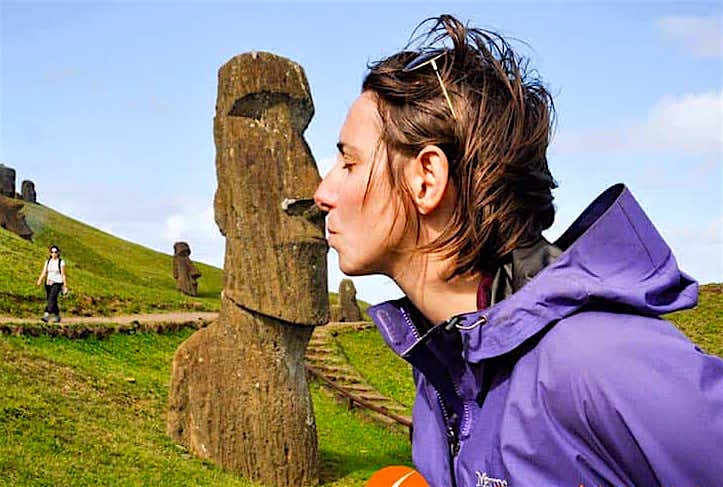
It is said that the eyes of the Moai were not placed on them until they were taken to their final resting spot. This is considered one of the reasons why the Moai that are broken or fallen are blind.
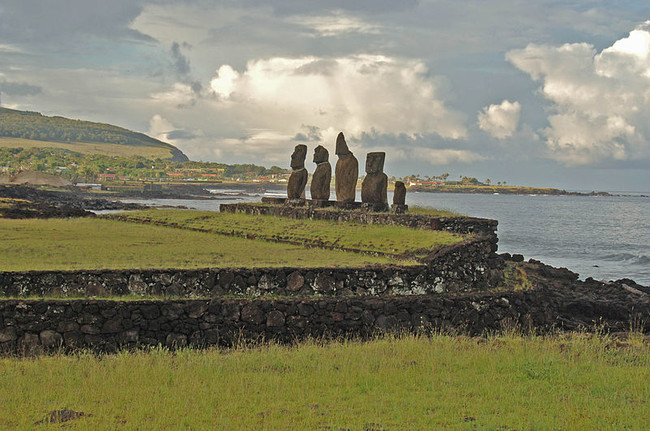
The various theories include one which suggests that the Moai were crafted by the professionals of the ancient Polynesians’ craft guilds. Another theory says that the member of different clans came together to construct the Moai.

What the Moai mean and what they represent is another topic of debate. Are they a symbol of authority and power as one group of archeologists believe or are they more than symbols?
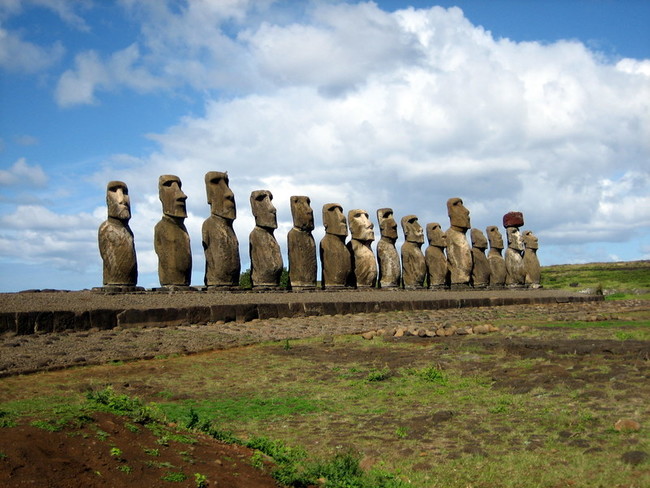
By some, the Moai are considered to be the physical forms of manifested spirits. Yet another theory believes that the Moai are the representation of ancestors who as mentioned before, face the island instead of the ocean to protect the residents.

Easter Island does not just have 10 or 20 Moai structures. There are a total of 887 Moai on this island! And these are not just heads but entire bodies!!
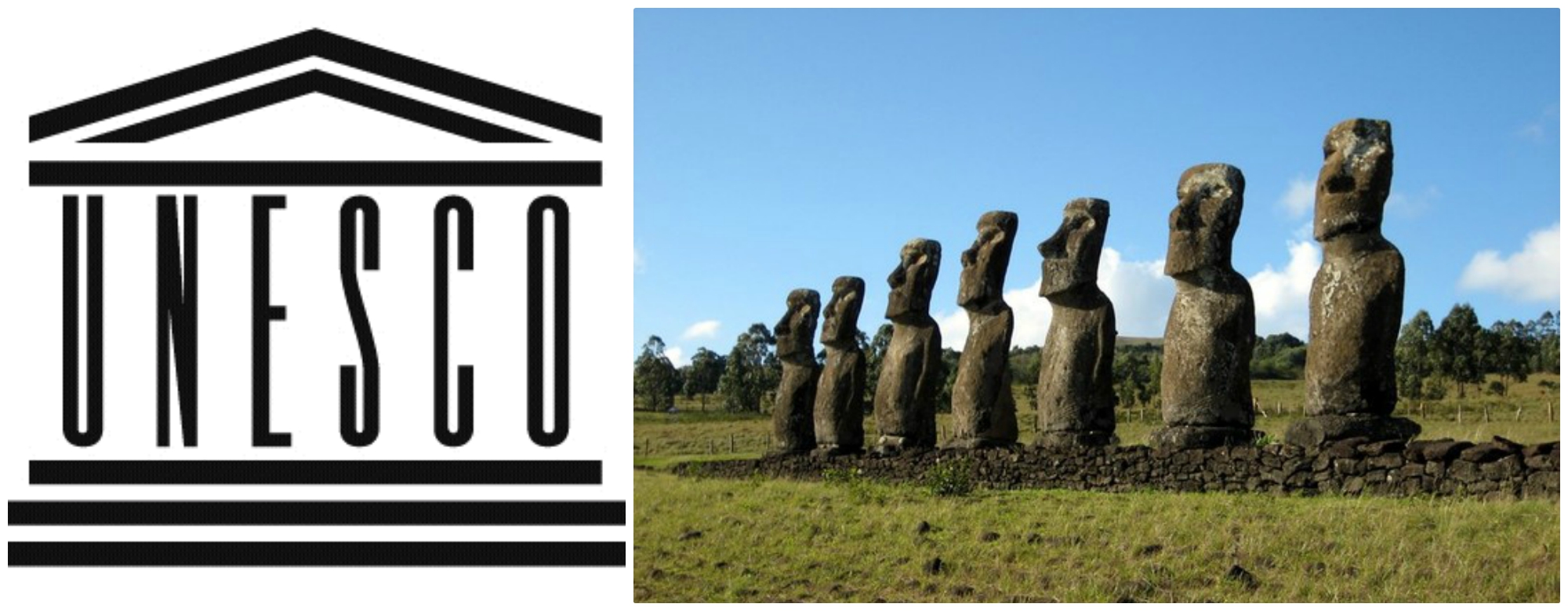
UNESCO added Rapa Nui National Park in the list of World Heritage Sites about 20 years ago. The status of the place is secured due to its exclusivity and the presence of the Moai.

Most of the Easter Island has been proclaimed as a part of the Rapa Nui National Park. It was March 22, 1996, that UNESCO gave the park World Heritage status.
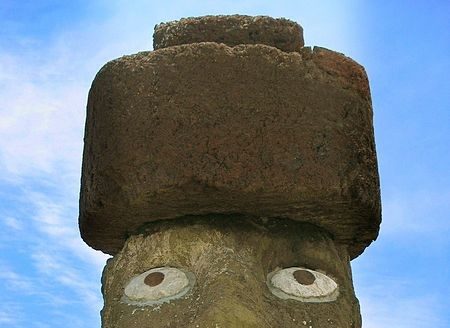
Here is another fun fact: the Moai wore hats. Pukao, the headgear represents hair. The Islanders used to tie their "hair" like a ball on the head. It was believed that "mana", supernatural powers, had connections with one's hair.
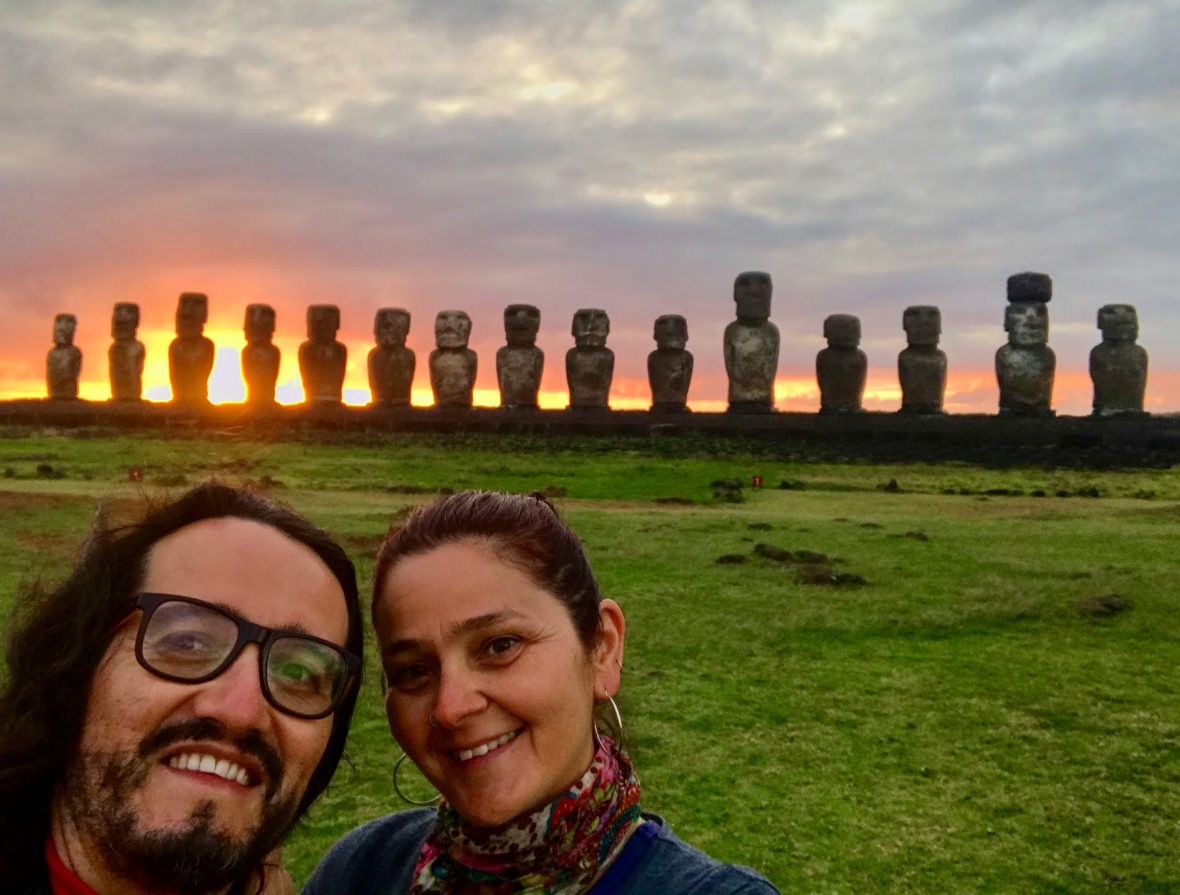
The Rapa Nui people were the spiritual kind. Jacob Roggeveen’s observation says that "they relied in case of need on their gods or idols which stand erected all along the seashore in great numbers, before which they fall down and invoke them.”
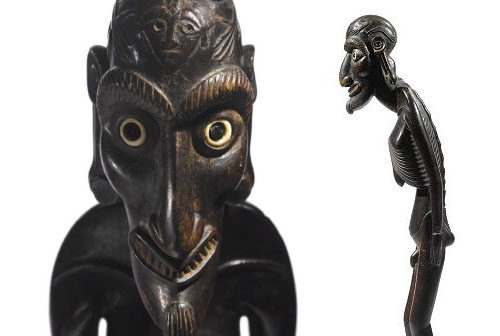
Overshadowed by the extravagance of Moai, the Mo’ai Kavakava, often go unnoticed. These wooden figures which seem to portray old men are also found on the Easter Island.

Kavakava in English translates to “ribs” and it does make sense as the figures are gaunt. It is usually believed that these figures represented starving demons and men wore them during religious ritual dances.
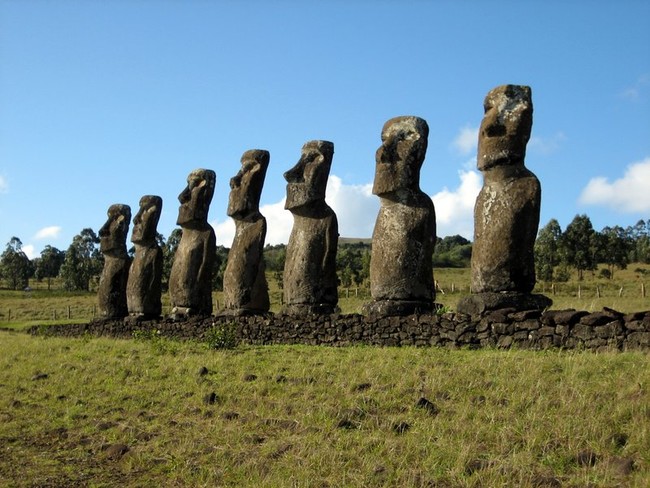
At the site of Ahu Akivi, 7 same size Moai stand on the land and during the Spring Equinox they face towards the sunset and when it is autumn Equinox, their backs are towards the sunrise.

The seven Moai are believed to represent seven protectors who according to a legend were told by the King's spirit in a dream to wait for him to come back from a trip across the ocean.

When it comes to history, people have a lot of misconceptions. Same is true when it comes to Moai. Van Tilburg believes it is important to dispel these misconceptions.
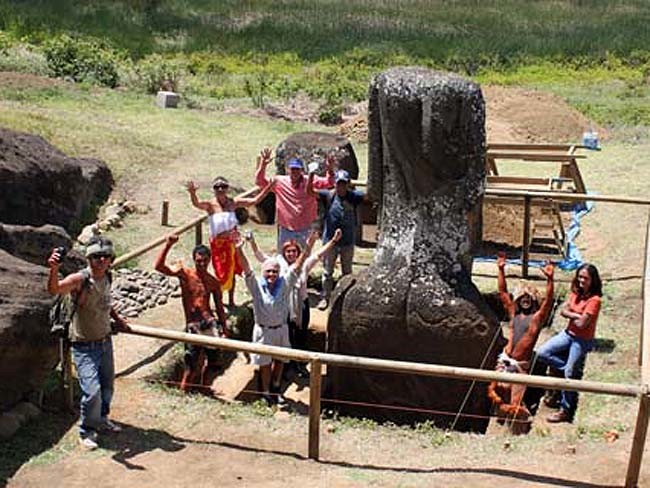
Says Tilburg, “the reason people think they are [only] heads is there are about 150 statues buried up to the shoulders on the slope of a volcano, and these are the most famous, most beautiful and most photographed of all the Easter Island statues. This suggested to people who had not seen photos of [other unearthed statues] that they are heads only.”